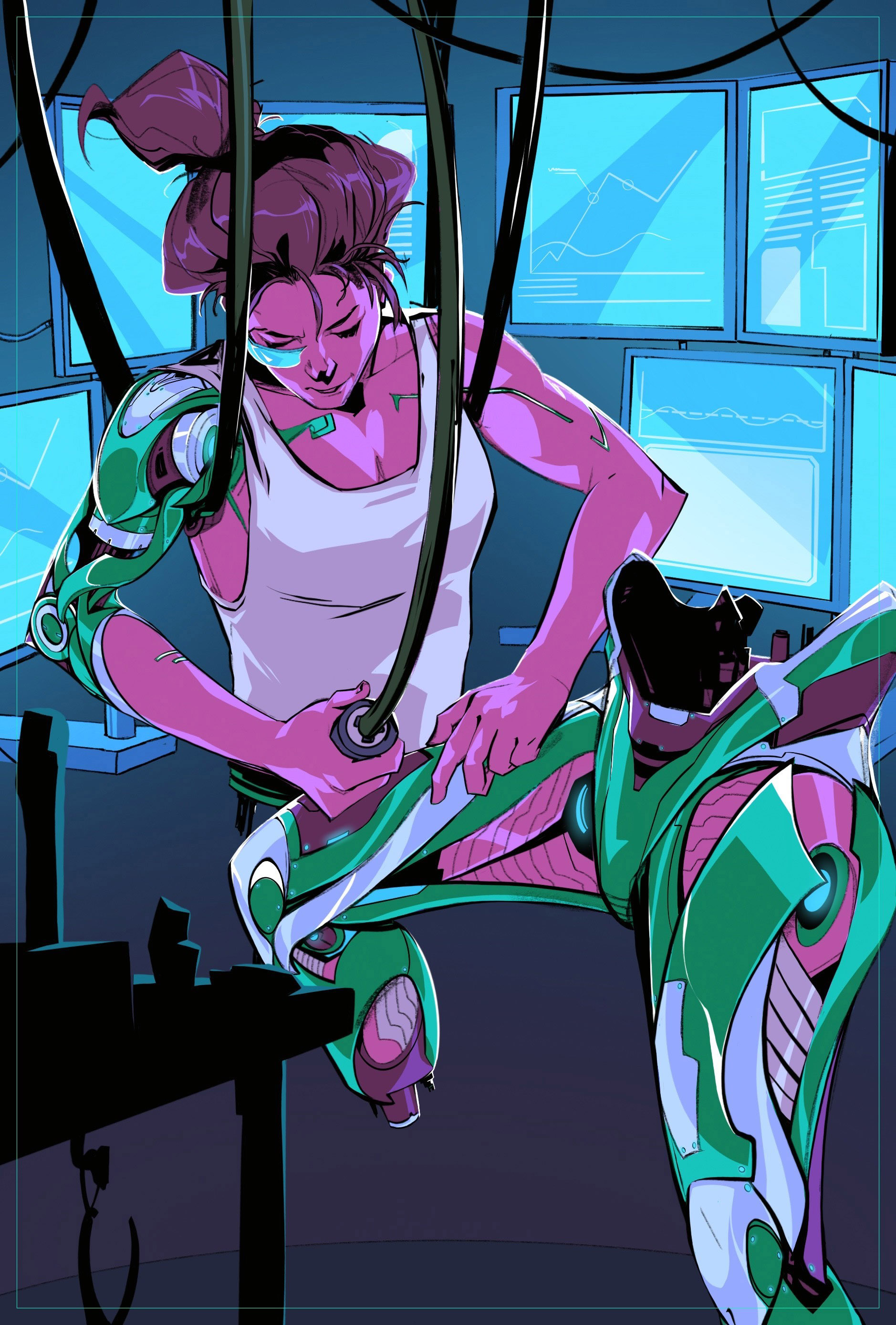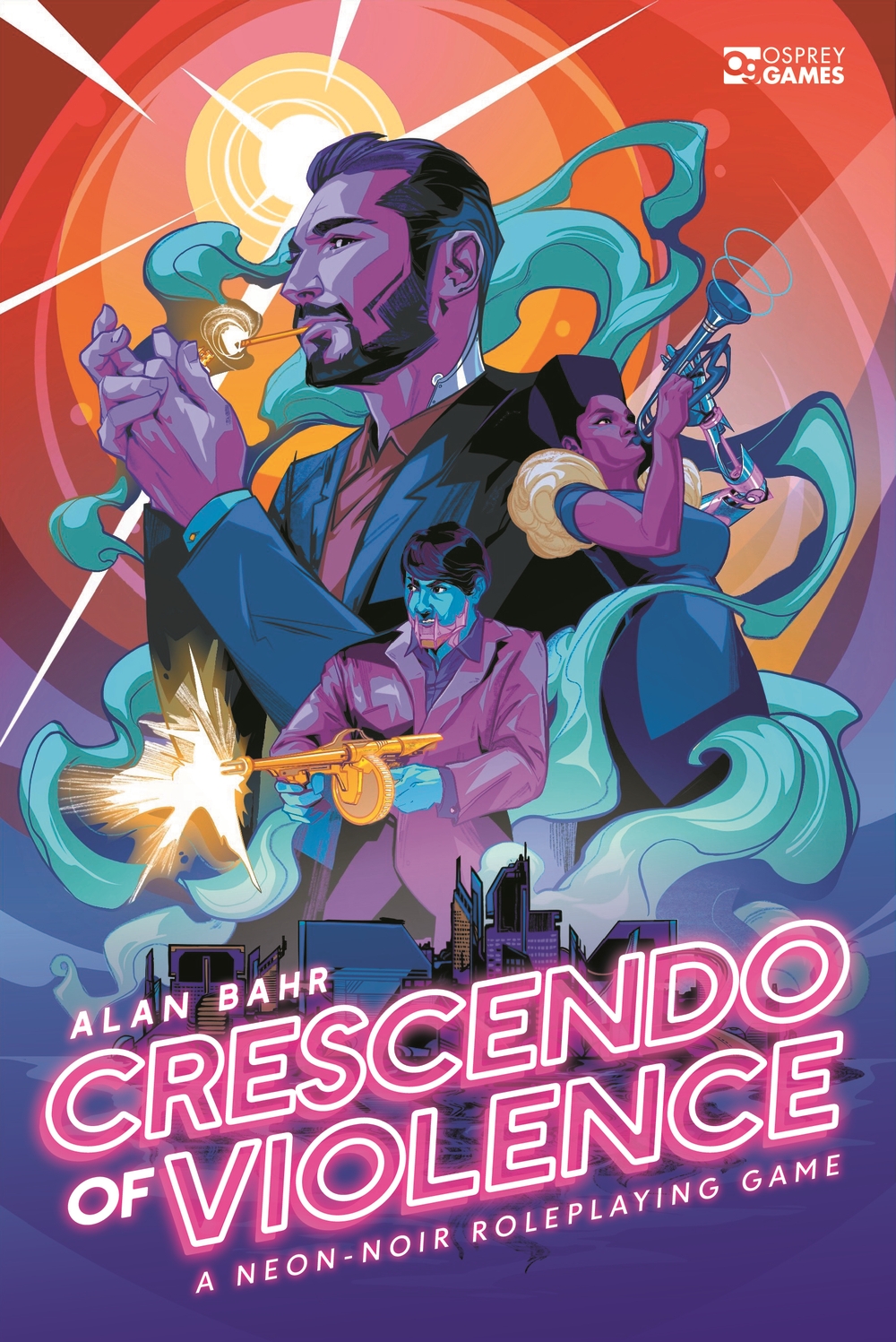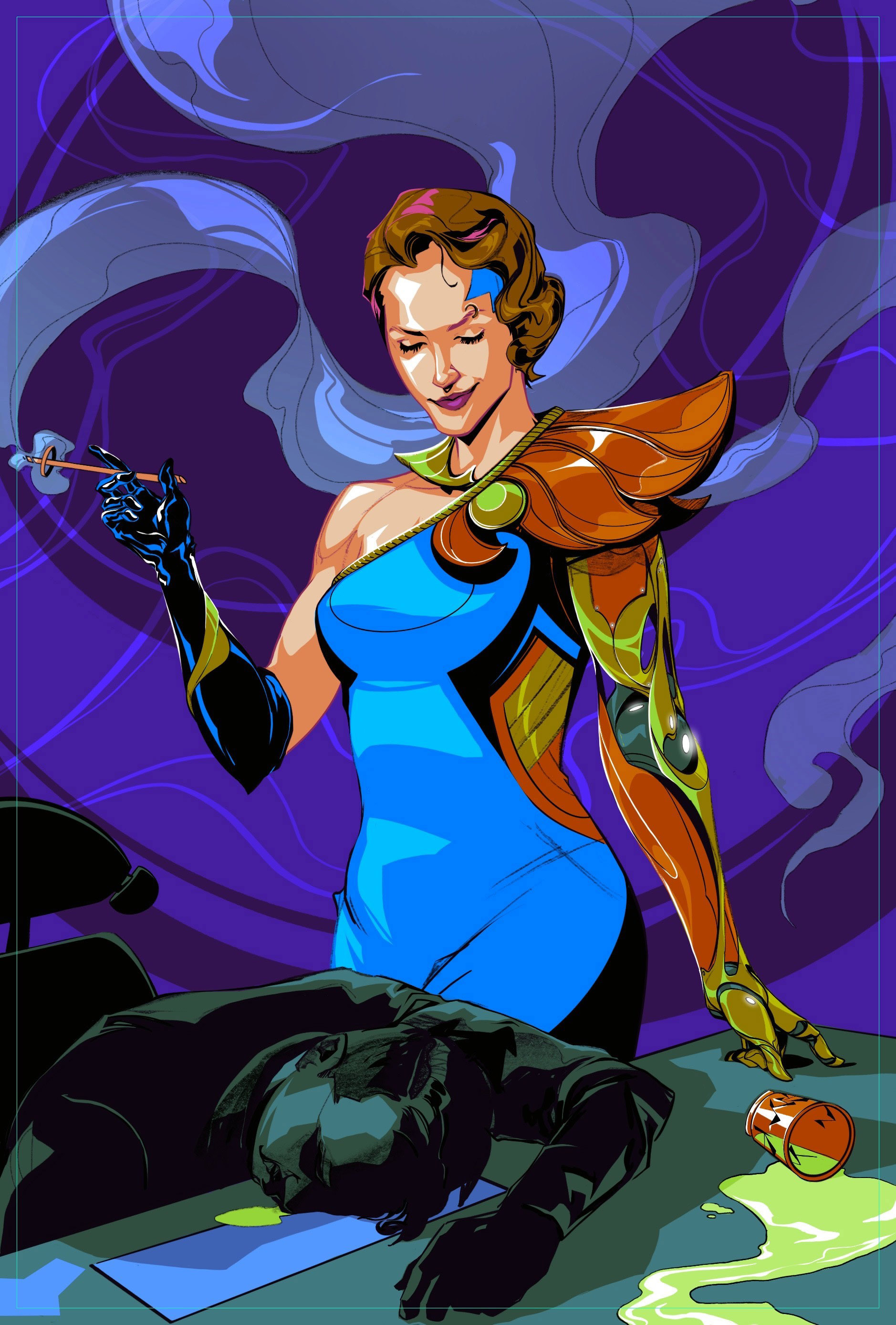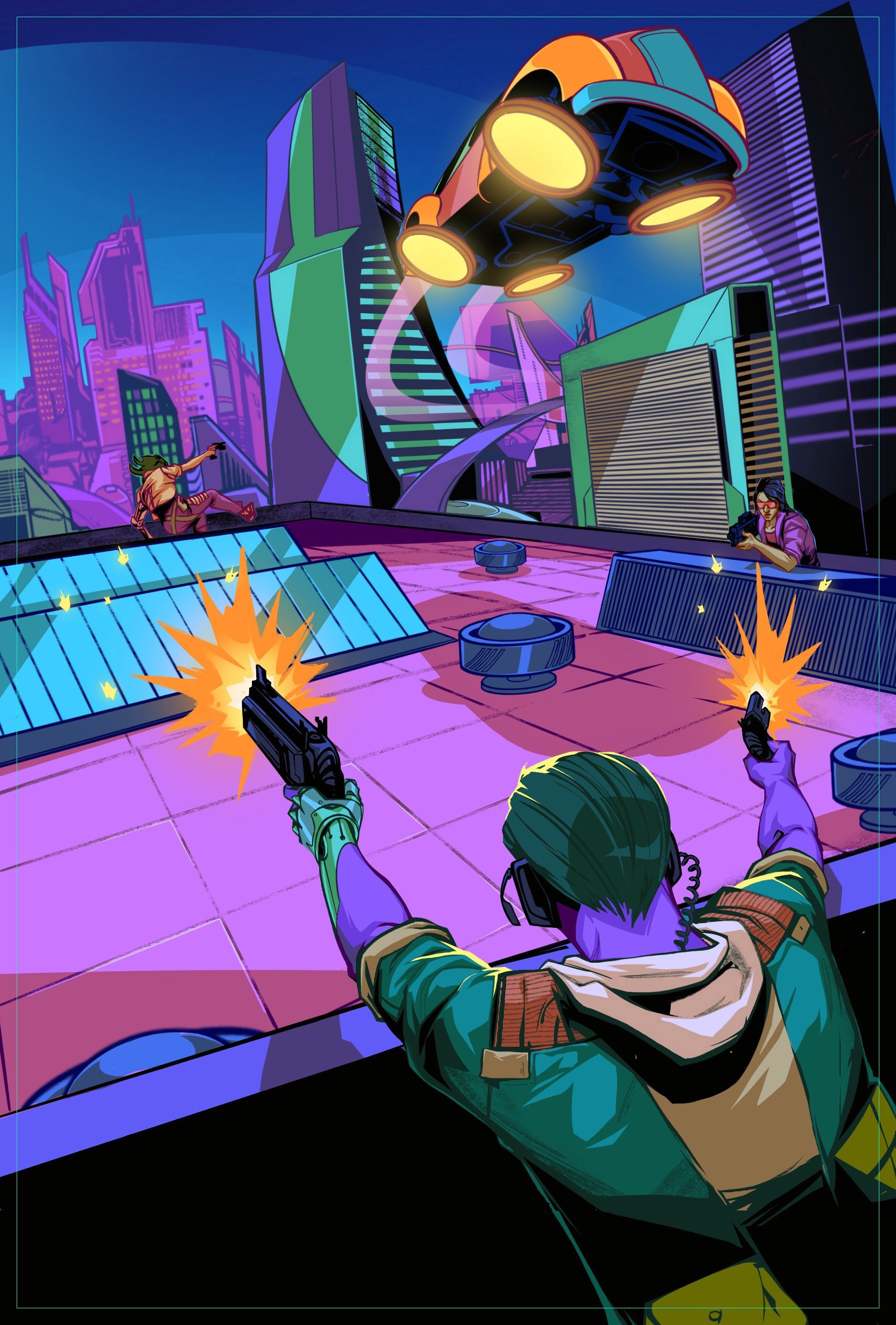
Crescendo of Violence: A Neon-Noir Roleplaying Game is out at the end of the month. We talked to author Alan Bahr about his cinematic rules system, so get your dice at the ready and prepare for a dynamic adventure…
Crescendo of Violence is a cinema and jazz music inspired neon-noir action movie RPG (wow, that’s a freaking mouthful.) There’s a lot going on in the game, including multiple types of tokens, acts with specific story structure actions, and more!
To that end, when designing the rules that power Crescendo of Violence (a ruleset I’m informally calling the STOPLIGHT system in my head – you’ll see why later), I tried to minimize complication, while trying to increase complexity. Complication is hard, but complexity makes for interesting choices (in my eyes).
The Basics
The basic idea is simple: every task has a difficulty of 1 to 10. The GM can simply ask themselves: “On a scale of 1-to-10, how hard is this?” and then just make the answer the Difficulty.
Then, the acting player rolls a pool of ten-sided dice, keeping the single highest result. If that die result equals or exceeds the difficulty, the action is successful.
As a GM, don’t worry too much about the fine detail or having perfect consistency. The 1–10 scale is relatively fluid, but it gives the group a clear scale to communicate with. This is a deliberate design choice to make it easy for the GM to make calls on the fly.
Remember, the aim of Crescendo of Violence is to capture a cinematic feel; how hard something is should be based on the needs of the narrative, plot, and story we’re telling. If Difficulty wiggles or shifts around, that’s OK. The GM should try to be as consistent and fair as possible, but also prioritize the feel of the moment and keep the story moving.
If you want a basis to calibrate by, here’s a guide:
1 - Impossible to fail.
2 - Easy. Only bad luck or severe lack of focus could make you fail here.
3 - Requires a little bit of effort or focus.
4 - Not hard (especially with practice), but requires attention.
5 - Takes effort and focus.
6 - There’s a real risk of failure, but still doable.
7 - Pretty challenging, even if trained.
8 - Consistent practice and effort are needed.
9 - Some luck, lots of experience, and practice are needed. It’s very hard.
10 - Very difficult, requires either a lot of luck or a lot of skill.
The game features no critical successes or failures, instead relying on ACTION TOKENS to simulate the ebb and flow of narrative.
Action Tokens
Each player has three Action Tokens – one red, one yellow, and one green – (see, STOPLIGHT) that represent what you can do and how well you can do it. You must spend all of your action tokens before you gain any back (unless another rule allows you to bypass this).
After you spend all of your action tokens, you immediately gain all three back. The game makes it clear that a player should always have between one and three action tokens at their disposal.
You must spend an action token whenever you take an action and roll dice, or if another rule tells you to.
When you spend action tokens, they represent the natural flow of difficulty, and you should narrate what they mean to the story. Green tokens add +2d10 to your roll, yellow do not modify it, and red removes 2d10 from your roll.
This puts the narrative change in die pools in the player’s hands. The only difficulty the GM controls is the number (1-10), and the players define what obstacles face them (or aid them) by using action tokens!
Combat
Combat is more fluid and cinematic, featuring a spotlight initiative system that swings around with the narrative, easy ranges and weapons, as well as a lack of hit points (action tokens, momentum tokens [to be explained later], and narrative input all serve as the cost of suffering harm in a fight!)
Of note, players cannot be killed until the third act of each session, a cinematic convention to ensure they go out in a blaze of glory in a boss fight! This is an action movie after all. Death should come with big explosions, lots of bullet casings and a pretty dramatic score!
There’s a lot more to the game than this (downtime actions, contacts, allies, and more), but you’ll have to explore them when you dig into the book!
Crescendo of Violence releases end of September. Pre-order your copy today!






Comments
You must be logged in to comment on this post. Click here to log in.
Submit your comment